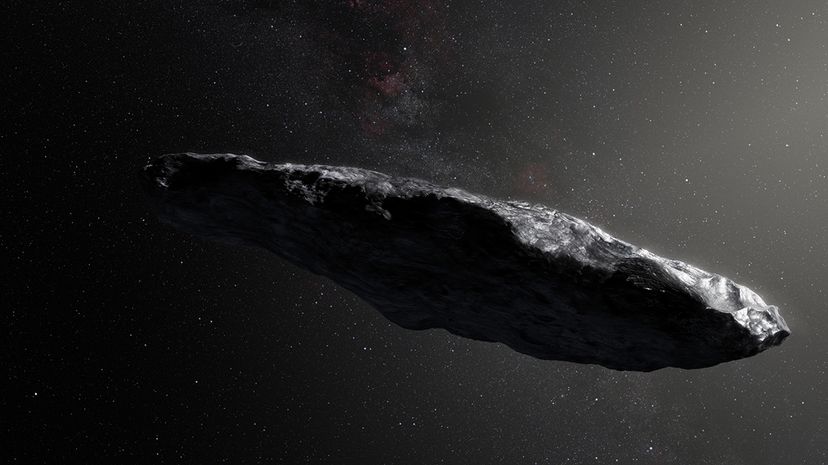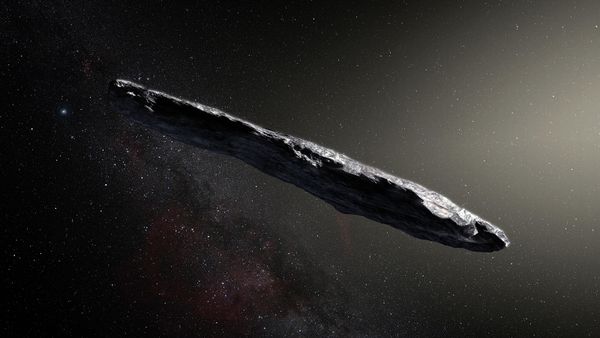When it was initially discovered by the Panoramic Survey Telescope and Rapid Response System (Pan-STARRS1) on Oct. 19, 2017, 'Oumuamua was assumed to be a comet since it was on a comet-like hyperbolic trajectory, traveling fast enough to escape the sun's gravitational pull. By tracing its path back through the solar system, astronomers realized that the object had zoomed past the sun the previous month. Usually when comets approach the sun, their ices erupt from the nucleus, creating a gaseous coma and tails. In this instance, however, there was no evidence of any cometary activity. 'Oumuamua didn't have the ices that you would typically find on a comet. With complementary spectroscopic analyses, astronomers concluded that it was an ancient asteroid from another star.
Before we continue, a bit of background: Comets and asteroids arise from the protoplanetary disks of dust, ice and gas around young stars. But whether a comet or an asteroid clumps together from the primordial material depends on the proximity to its star. If it forms close, where stellar heating is so intense that it bakes away the ices, an asteroid is created. Beyond a certain distance, however, it's cold enough for these objects to retain their ices and, voila, you wind up with a comet. The distance from a star beyond which it's cold enough for comets to form is known as the "snow line" (for obvious reasons). For our solar system, the snow line is located approximately three times farther away than the sun-Earth distance.
This is where things get puzzling: Comets are loosely bound to the gravity of their star since they typically develop farther away. Therefore, it's comparatively easy to kick a comet out of a given star system. This is one of the reasons why 'Oumuamua was thought to be an interstellar comet at first; comets are susceptible to being perturbed by a stellar encounter. Asteroids, on the other hand, typically form in orbits near their stars, and it takes more energy to boot them out of a star system. Something cataclysmic must happen to hurl asteroids out of the gravitational well.
"It's harder for that stuff to get ejected because it's more gravitationally bound to the star. It's hard to imagine how 'Oumuamua could have gotten kicked out of its system if it started off as an asteroid," said astrophysicist Sean Raymond, at the French National Center for Scientific Research and the University of Bordeaux, in a statement.
Where does this leave 'Oumuamua? Well, it's an asteroid, with a strange shape, and it comes from another star system. And that tells us that either our theories as to how asteroids, comets and planets form aren't correct, or that 'Oumuamua must have experienced an energetic event to be propelled out of its home star system.


